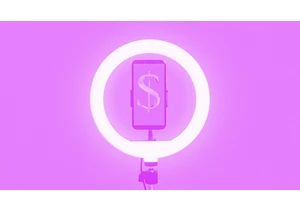If you hate dealing with opaque and costly app subscriptions, I’ve got bad news for you: the situation is about to get even worse—and you can blame artificial intelligence for that.
App subscriptions have been a part of the app economy since Google first allowed developers to offer them in the Play Store in 2011. (Apple followed suit in its App Store five years later.)
They serve a purpose. By charging users a monthly or yearly fee to use their app, instead of selling the app for a onetime fixed price, developers can earn a regular, recurring income, which helps cover the costs of maintaining the app and adding new features to it over the long term. But many users hate app subscriptions because it means they never actually own the software, they’re just renting it—and the costs to do so can increase by the month or year.
From a user perspective, the glut of apps that now require a subscription contributes to increased subscription fatigue. Consumers now need to get subscriptions for everything: streaming services, software, and even grocery delivery. And new generative AI features from major tech companies like Google and Apple seem designed to force us into even more subscription plans or increased pricing tiers.
First up is Google, which announced this month that beginning on May 15 it will bring many of its AI image editing tools to all Google Photos users. One of these tools includes what Google calls “Magic Editor”—a generative AI editor that, among other things, allows one to completely reposition the people in their photographs (yes, I miss the authenticity of analog photography, too). Previously, Magic Editor was limited to owners of Pixel 8 and Pixel 8 Pro phones, but now the company is giving all Google Photo users on Android and iOS the tool.
Great, right? Eh, not so much. You see, if you don’t have a Pixel 8 or Pixel 8 Pro, Google will limit the amount of “magic” edited photos you can save to 10 each month. But there’s a way around this limitation via—shocker!—a subscription. The company will graciously allow you to save more than 10 magic-edited photos if you subscribe to its Google One subscription plan. But not just any Google One plan—you’ll need to subscribe to the Premium or All Premium plans, which cost $9.99 per month and $19.99 per month, respectively. (The most affordable Google One plan is $1.99 a month—but that’s not eligible for Magic Editor saves.)
If you long for a time when you didn’t have to pay a monthly fee to use an app, imagine how badly you will miss the era when you didn’t need to pay a monthly fee just to save documents in an app.
Then there’s Apple, which has yet to reveal its AI plans but will likely do so at its annual Worldwide Developers Conference this June. While Apple hasn’t publicly announced any AI features, it is widely expected to add them across its apps, including in the Photos, Music, and Safari apps.
But given that Apple has fallen in love with subscription services in recent years (the company currently offers Apple TV Plus, Apple News Plus, iCloud Plus, Apple Music, Apple Arcade, and Apple Fitness, as well as its Apple One plans that bundle them together) many people are speculating that Apple will lock some of iOS 18’s most impressive AI features behind a subscription, too.
How, exactly? Well, it could follow Google’s lead by allowing only, say, subscribers to Apple’s most costly iCloud Plus plans to save more than a certain number of their AI-edited photos to their iCloud Photos library. Or Apple could choose to offer two tiers of a revamped AI-chatbot-powered Siri—something akin to how ChatGPT offers its GTP-3.5 chatbot for free, yet charges a fee for access to the more advanced GPT-4 chatbot.
Will Apple actually do this? Only the company’s execs know. But given that Apple made a staggering $85.2 billion from its “services” division in fiscal 2023, I can’t see why the company wouldn’t jump on the chance to use the appeal of artificial intelligence to increase subscription margins even further.
So where does this leave the average consumer? With more subscription fees, most likely.
To me, app subscription fees seem like a fair price to pay, literally, for apps by smaller developers that have limited financial resources. Most do a lot of work and put a lot of love into the apps they create—and they deserve to be compensated appropriately.
But it’s disappointing that the largest, wealthiest tech giants seem to be using the generative AI boom sweeping the tech industry to push their users into their pricey subscription offerings—especially when these tech giants are likely using our data to help train those various generative AI tools, meaning we’re effectively paying for the tools twice.
Connectez-vous pour ajouter un commentaire
Autres messages de ce groupe

During January’s unprecedented wildfires in Los Angeles, Watch Duty—a digital platform providing real-time fire data—became the go-to app for tracking the unfolding disaster and is credit



Yahoo’s bet on creator-led content appears to be paying off. Yahoo Creators, the media company’s publishing platform for creators, had its most lucrative month yet in June.
Launched in M

From being the face of memestock mania to going viral for inadvertently stapling the screens of brand-new video game consoles, GameStop is no stranger to infamy.
Last month, during the m

The technology industry has always adored its improbably audacious goals and their associated buzzwords. Meta CEO Mark Zuckerberg is among the most enamored. After all, the name “Meta” is the resi

Even as AI becomes a common workplace tool, its use in
